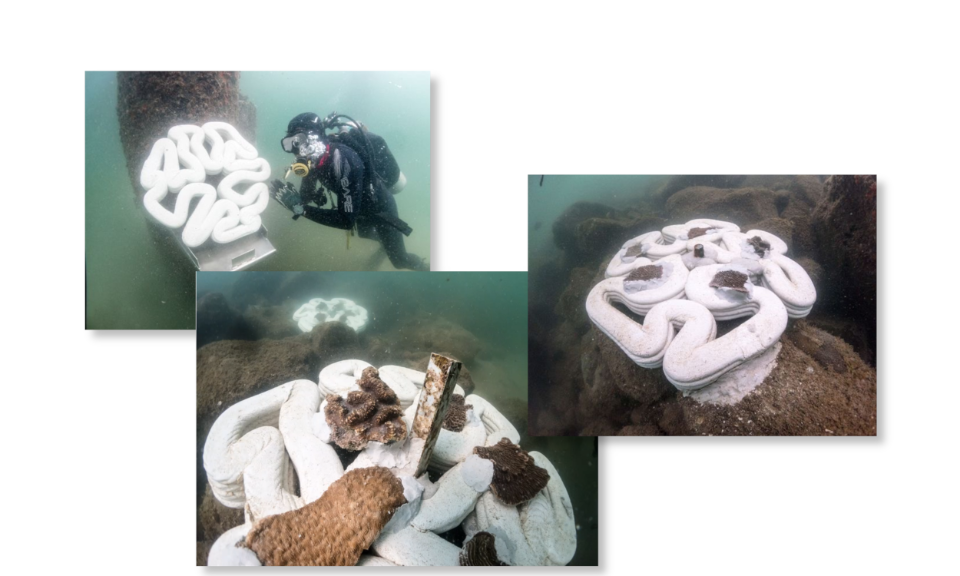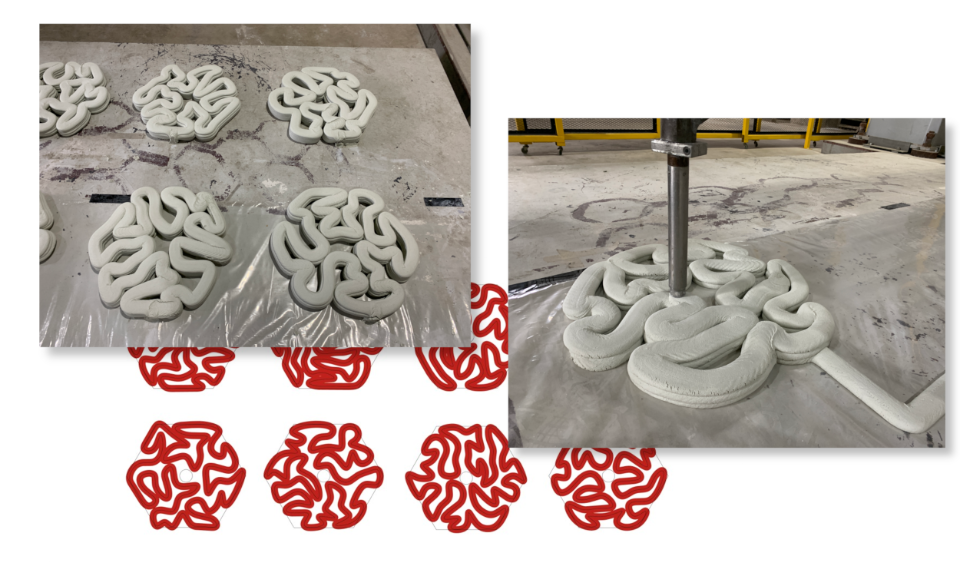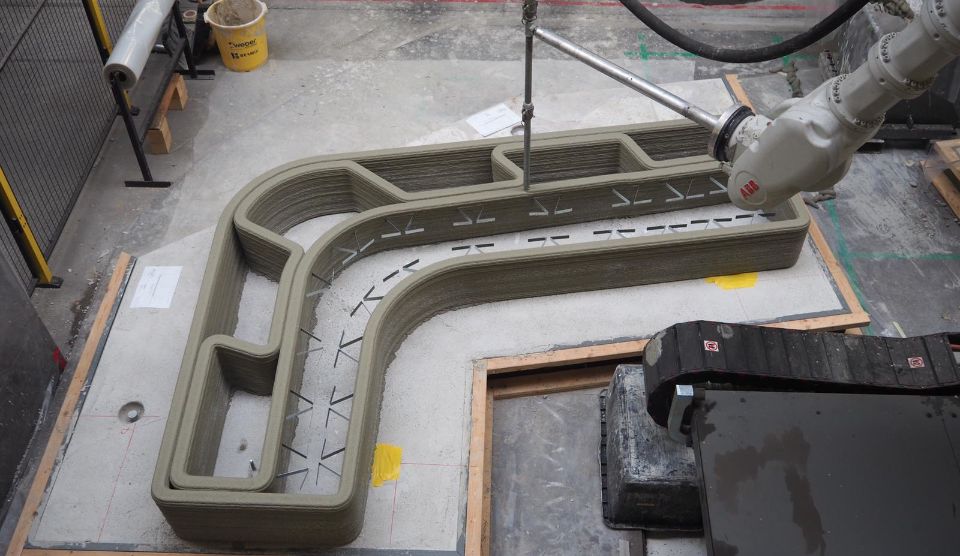Coral growth with 3D concrete printing
National Board Parks and JTC Corporation
Seas and oceans are acidifying due to climate change, this is affecting corals. The majority of coral reefs are not expected to survive this century! Coral reefs host 25 per cent of ocean life, they are the habitat for many fish and other marine animals. To ensure that we preserve enough coral in the future, coral is frequently transplanted. Witteveen+Bos helped with 3D concrete printed structures.
Coral transplant
Coral transplantation is a challenging and expensive job. For coral transplantation, concrete or metal structures can be used on which coral fragments can be placed. The foundations are heavy and large and it requires underwater operations that are labour-intensive and logistically demanding. Singaporean organisations National Board Parks (NParks) and JTC Corporation therefore investigated innovative ways of production. Witteveen+Bos was asked to assist in this with the design and construction of 3D concrete printed structures with the aim of stimulating coral reef growth and improving biodiversity.

Eight unique structures with 3D concrete printing
In this pilot project, eight unique 3D concrete printed structures were designed parametrically. When designing these units, the natural growth pattern of the coral reef was studied and coded into the design algorithm. Thanks to this algorithm, Witteveen+Bos can generate a wide range of unique patterns, but also the design parameters can be carefully controlled to simulate the natural pattern of coral reef. Each printed coral structure can be customised to match the natural pattern of the coral reef.
Corals need other marine animals to live and grow. Therefore, the structures contain grooves and cavities, where marine animals can hide from predators and coexist with the corals placed on the units.

Placement of the structures
On land, coral fragments were manually placed on the structures. After this, the structures were placed at seawalls and jetty piers. Each structure weighs less than 25 kilograms, so a diver could transport them relatively easily underwater. Because the structures are relatively light in weight and the coral fragments have already been placed on them on land, the number of available locations has expanded considerably. After the structures were placed underwater, the work was handed over to nature.
Success factors
1: Eight unique 3D concrete printed structures were designed and printed in concrete. Coral fragments were attached to these units and marine animals hid in the grooves and cavities.
2: Each modular unit can be carried and deployed by one person. This reduces the amount of manpower and logistical requirements involved in coral transplantation.
3: The transplanted corals were monitored for four months for survival rates. 70% of the transplanted corals survived and are thriving.
3D concrete printing
Concrete is poured in layers to produce structural elements for buildings and infrastructure projects.


Want to know more?

Marijn generates impact through innovation such as digitalisation and 3D concrete printing in the construction industry. He was the winner of the 2020 Cobouw Young Talent Award.